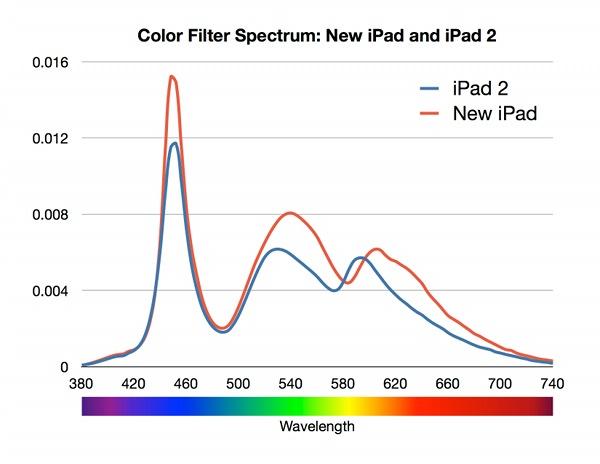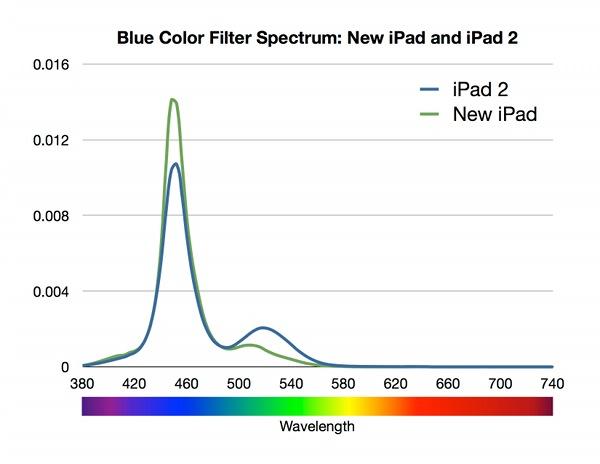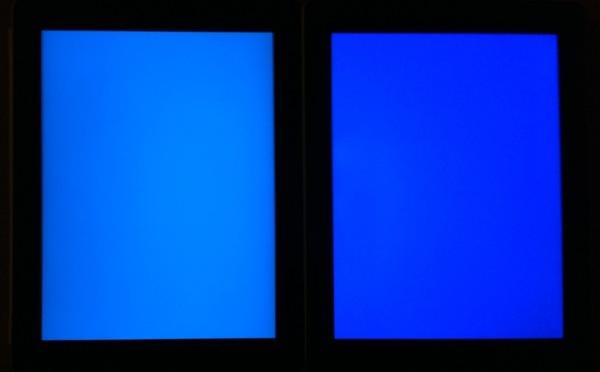Tech behind new iPad's color quality attributed to 30% increase in power usage
According to results from a series of tests conducted by display-centric blog dot color, the new Retina Display iPad utilizes advanced filters to improve color reproduction, which forced Apple to bump the output of the tablet's backlight LEDs to maintain a brightness comparable to previous models.
A problem with all LCD displays is unwanted light leakage which translates to inaccurate color reproduction and lower saturation. To solve the problem and improve an LCD screen's range of color, or color gamut, display makers can either boost the performance of backlight LEDs or implement higher quality filters. In both cases the goal is to represent the primary colors, red, green and blue, as purely as possible since these three hues are mixed to create a display's color spectrum.
Based on the test's measurements, Apple chose to concentrate on upgrading the filters used in the Retina Display to more accurately reproduce the primary colors. The new technology resulted in a spike in power consumption, however, because the improved filters let less light through than inefficient versions. This is to be expected, as high quality filters are narrower by design in order to block out unwanted light bands.
The spectrum graph below was taken from a white screen on both the iPad 2 and third-generation iPad in which all primary color are switched on. Reading the results show that the Retina Display features a significant peak at the 450 nanometer wavelength without much change in shape, meaning that the brightness of the color blue has been boosted.
Source| dot color
When the same spectrum measurements are taken with only blue sub-pixels open, the same peak can be seen, however there is also a slight bump at around 540 nanometers. This small peak means that iPad displays leaks a certain amount of green light when displaying "blue" colors.
What can be seen from this blue-pixel-only chart is that the new iPad allows less green light to pass through the filter which translates into a purer blue.
As a result of the enhanced color, less light is getting through the improved filters and thus more LEDs or more powerful units are needed to compensate. By dot color estimates, this relates to a 20-30 percent increase in power consumption which is most likely one of the main reasons why the new iPad sports a massive 42.5-watt-hour battery.
 Mikey Campbell
Mikey Campbell













 Mike Wuerthele
Mike Wuerthele

 Malcolm Owen
Malcolm Owen
 Chip Loder
Chip Loder

 William Gallagher
William Gallagher
 Christine McKee
Christine McKee
 Michael Stroup
Michael Stroup







42 Comments
Editor!
No way to turn this feature on or off? Most of the time I would rather have 30% longer battery life.
No way to turn this feature on or off? Most of the time I would rather have 30% longer battery life.
1) No, but you can reduce your backlight brightness, turn off unneeded radios, and use paid apps that don't have ads.
2) This doesn't mean 30% longer battery life as we're talking about the power usage of the display, not the GPU, not the CPU, the backlight, or anything else.
Editor!
But maybe there's also wanted leakage of unwanted light, wanted leakage of wanted light, and unwanted leakage of wanted light. He's just making sure we know what kind is leaking.
It's just not normal, my iPad is dropping about 14% battery power in like 30 minutes.